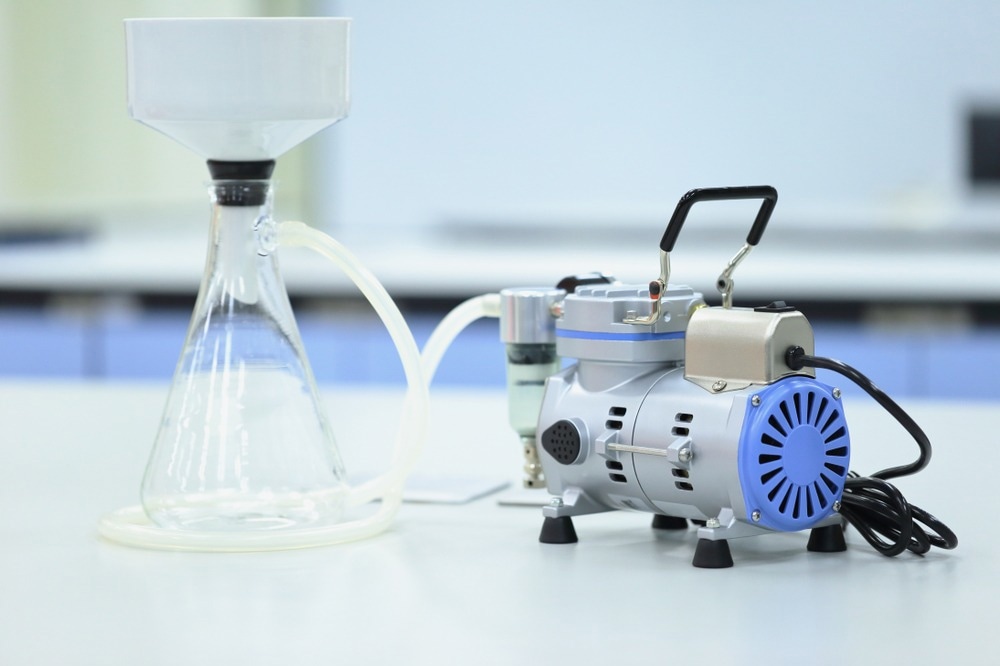A new study in the journal Nature Communications analyzes pathogen, host, environmental, and behavioral factors that were associated with a higher respiratory pathogen load in indoor ambient air.

Study: Indoor air surveillance and factors associated with respiratory pathogen detection in community settings in Belgium. Image Credit: AgriTech / Shutterstock.com
Indoor transmission of pathogens
The risk of airborne viral transmission depends on the host, pathogen, environmental, and behavioral factors. The ability of pathogens to survive in the environment and colonize hosts while retaining their infectiousness differs between each organism.
Aerosol generation can be influenced by the number of hosts, their mask-wearing, respiratory activity, and individual susceptibility. Likewise, aerosol transport, inactivation, settling, and removal can be impacted by several environmental factors including temperature, airflow patterns, room volume, humidity, air filtration, ventilation, and ultraviolet (UV) radiation.
Can ventilation reduce viral transmission indoors?
Previous research indicates that ventilation can reduce the incidence of infectious diseases. One study reported that high carbon dioxide (CO2) levels, which are indicative of poor ventilation, led to school absences due to illness with cold-like symptoms.
Another study reported a higher incidence of pneumococcal disease and risk of tuberculin conversion in healthcare workers due to low air exchange rates. Indoor CO2 concentrations have also been associated with higher detection of rhinovirus bioaerosols, culturable bacterial colony-forming units, and bacterial cell wall components.
Nevertheless, there remains a lack of information supporting transmission reduction through portable air filters as compared to pathogen removal by classical heating, ventilation, and air conditioning (HVAC) systems.
One recent study reported that the severe acute respiratory syndrome coronavirus 2 (SARS-CoV-2) bioaerosol load was lowest in outdoor air and higher in indoor air from hospital settings as compared to community settings. Moreover, SARS-CoV-2-containing aerosols were more abundant when collected in proximity to an infected individual within a controlled environment. These viral particles also correlated positively with ambient CO2 and nasopharyngeal viral copies and were inversely associated with portable air filtration, ventilation, and increased humidity.
Few studies have reported the accelerated clearance of airborne particles by the use of portable filters. However, no study to date has determined the effect of potable filters or ventilation on a load of respiratory pathogen bioaerosols that were controlled for other important variables.
Sewage samples have also been used to monitor viral transmission rates throughout a given community; however, this surveillance approach is associated with certain disadvantages such as high contamination with environmental microorganisms, longer runoff times, and a complex relationship between the risk of transmission and gastrointestinal shedding. As a result, the testing and sampling of indoor air may be a good alternative surveillance approach, as it is independent of clinical test indications and laboratory capacity.
About the study
The current study involved the collection of ambient air between October 2021 and April 2022 in and around the city of Leuven, Belgium.
A wide range of sampling sites allowed for different age groups to be assessed, some of which included nursery schools, preschools, primary schools, secondary schools, and nursing homes. Herein, air was sampled for two hours at a rate of 200 L/min, in addition to humidity and CO2 measurements. Clinical samples were also collected from patients at University Hospitals Leuven.
Thereafter, processing and analysis of air samples involved nucleic acid extraction, detection of SARS-CoV-2 through the reverse transcription qualitative polymerase chain reaction (RT-qPCR) assay, and detection of 29 respiratory pathogens by multiplex qPCR. Information on behavioral, host, and environmental-related factors were collected for all samples.
The effectiveness of portable air filters was analyzed by placing the filters in two separate locations known as locations two and three in a nursery school, as well as another separate space referred to as location one that served as control. These samples were analyzed for eight weeks on Mondays, Wednesdays, and Fridays each week.
Study findings
A total of 341 environmental samples were collected from 21 different sampling sites. The most commonly detected pathogens in descending order included Streptococcus pneumoniae, human enterovirus, including rhinovirus, human bocavirus, human adenovirus, and human cytomegalovirus. The percentage of samples that were positive for at least one pathogen was highest for the three- to six-year-old age group and lowest for those who were above 65 years of age.
Human bocavirus, human cytomegalovirus, human enterovirus, and Streptococcus pneumoniae were almost always present in nursery school samples. Pneumocystis jirovecii and human adenovirus peaks were longer during the winter months.
A visual association was reported for SARS-CoV-2 across all sampling sites and age groups in ambient air in community settings and the University Hospitals Leuven. A significant association was observed between mean CO2 levels and Streptococcus pneumoniae, Pneumocystis jirovecii, other coronaviruses, and human enterovirus.
Natural ventilation was negatively associated with respiratory syncytial virus A/B and Pneumocystis jirovecii. Air filtration was also negatively associated with Streptococcus pneumoniae, several coronaviruses, human cytomegalovirus, and human bocavirus.
No difference in positivity for any respiratory pathogen was observed for locations one and three. However, differences were observed between Mondays and Wednesdays and Mondays and Fridays for location two but not between Wednesdays and Fridays. Additionally, a significant increase in Ct values was observed for location three on Fridays.
Conclusions
The study findings indicate that air filtration and ventilation can reduce the risk of respiratory pathogen transmission. Moreover, qPCR testing of ambient air can be used to monitor the community circulation of respiratory pathogens when other confounding factors are considered.
Limitations
The study has several limitations, including the inability to isolate replication-competent viruses. Furthermore, the exact concentrations of respiratory pathogens in ambient air could not be determined.
The mechanical, natural airflow, and ventilation rates could not be assessed directly or modeled completely. Finally, the samples collected in this study could not entirely represent locally circulating respiratory pathogens.
Journal reference:
- Raymenants, J., Geenen, ,C., Budts, L., et al. (2023). Indoor air surveillance and factors associated with respiratory pathogen detection in community settings in Belgium. Nature Communications. doi:10.1038/s41467-023-36986-z.